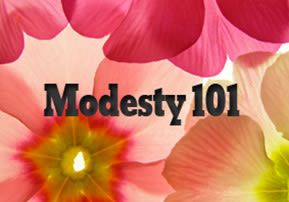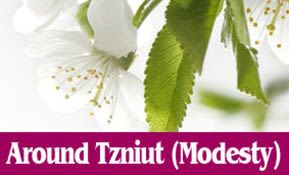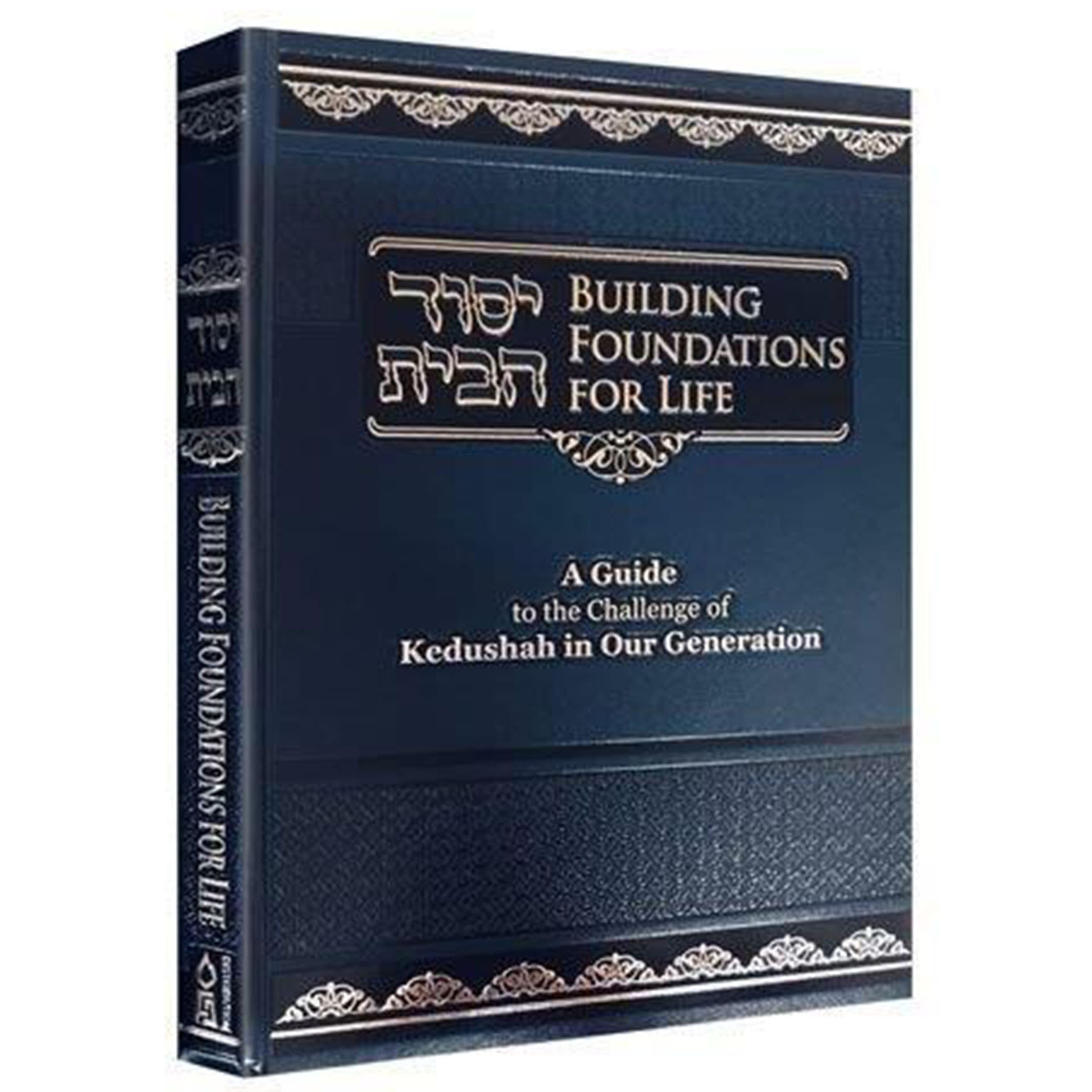
Modesty 101
When we think of the word precious, we don’t picture in our minds something cheap that’s displayed freely on the street and up for grabs at any and all times…

Introducing the Laws of Tzniut (Modesty)
B’ezrat Hashem (with G-d’s help), this is the second part of a three-part series on tzniut (modesty), which began with a first article relating the preciousness of the Jewish woman’s neshama (soul), and how the laws set forth by tzniut allow women to not only safeguard such preciousness but also elevate it. This article will give a very basic introduction to the principle law of tzniut, though I must emphasize that the halachot (laws) of tzniut cannot be learned in one sitting, nor should they be learned quickly. There are many details in these halachot, and it is recommended to study them slowly, so that the information will be appreciated and not considered too heavy.
For one who would like to continue in the study of these halachot, I recommend a very comprehensive book by Rabbi Pesach Eliyahu Falk, Oz V’hadar Levusha – Modesty: An Adornment for Life, Gateshead, England, 1998. B’ezrat Hashem, by learning the halachot of tzniut in depth, we will realize the beauty in keeping this crucial mitzvah (commandment) and how it assists the Jewish woman in understanding the relationship between her public behavior (in dress, speech, and action) and kedushat Yisrael (the holiness of the Jewish people).
The principle halacha of tzniut (in dress) is that all Jewish women must cover all parts of their torso, as well as parts of their arms and legs, whether in public or in the presence of people outside of their immediate family. There are three categories of dress that are not considered tzniut: insufficient dress, flashy or showy dress, and inappropriate dress.
Insufficient dress refers to not covering those areas of the body which are ossur (forbidden) for a man to see on a female. Examples of insufficient dress are see-through clothing, tight clothing, sleeves or skirts that are too short, and uncovered hair of a married woman.
Flashy or showy dress brings excess attention to the woman, while she should be dressing in a refined manner, rather than in the manner that most attracts men’s attention.
Inappropriate dress includes wearing overly casual or sloppy clothing, which reflects a lack of respect for Hashem’s (G-d’s) constant presence. The same way one would not wear overly casual clothing in front of a king, a Jewish women should dress in a proper and dignified manner in front of The King.
There are several issurim (prohibitions) that are transgressed when a Jewish woman dresses in a non-tzniut manner. A Jewish woman is prohibited from dressing like the other nations of the world, in other words dressing like secular society. Because her way of dress reflects her inner soul, it is inappropriate to dress like other nations of the world that may have inclinations towards immodesty that the Jewish soul does not. A Jewish woman is also forbidden to dress in a way that may cause men to sin, by seeing a part of the female body forbidden to them and by possibly making them desire that which is not theirs. Furthermore, a Jewish woman has an important part in the obligation of making her environment holy, as inadequate dress takes away from the holiness of the society. Finally, from the story of the sotah (the woman who is accused of committing adultery), we learn that there is a Torah obligation for a married woman to cover her hair.
While reading the last two paragraphs may have someone who is not currently abiding by the laws of tzniut in dress feeling overwhelmed, and while it may seem heavy, these laws are put in place to protect the Jewish woman’s purity embodied by her neshama. The Jewish woman has it ingrained within her from her creation to be successful in this mitzvah. Thus, with the proper guidance and appreciation of the halachot’s purpose to preserve and cherish our neshamot’s (souls’) inestimable value, one can learn to see the halachot not as a burden but rather as a tangible way of cultivating her honor. With that, it is important to stress the significance of guidance in following the many halachot of tzniut, as there are always questions about particular garments as well as many feelings that come along with the taking on of such a mitzvah. There is no such thing as a stupid question, and with the halachot of tzniut, nothing can be clarified too many times. One should always seek out a rebbetzin or madricha (advisor) of some sort to help her in answering any and all questions or in clarifying confusions to ensure proper observance of the halachot and feeling completely comfortable in adhering to them.
While this article may seem dry or heavy for some, I felt that it was important to introduce the main halacha of tzniut. B’ezrat Hashem, the next article will be the summation of the topic of tzniut and will address the tzniut not only of dress but also of manner, speech, and action as well as its importance and significance to the Jewish woman. For all of you who are working on observing this mitzvah, may Hashem watch over you, and may you merit to see the amazing inner beauty of your neshama which this mitzvah brings out.
(Several helpful notes for this article were taken from Rabbi Pesach Eliyahu Falk’s book on tzniut, Oz V’hadar Levusha – Modesty: An Adornment for Life, Gateshead, England, 1998.)








1/18/2013
Modest and Kosher Sewing Patterns Hi, please spread the word among your members who sew about the availability of modest and kosher sewing patterns for women and girls. All designed according to Rav Falk's Tznius Handbook. We have an international clientele, including Israel. http://kosherpatterns.com Thank you.
1/18/2013
Hi, please spread the word among your members who sew about the availability of modest and kosher sewing patterns for women and girls. All designed according to Rav Falk's Tznius Handbook. We have an international clientele, including Israel. http://kosherpatterns.com Thank you.
11/15/2009
See-trough with something under I would like to find out:
When wearing a silk blouse that is partially see-through and wearing a shirt under it, so skin will not be revealed, it this ok?
Thank you very much,
e